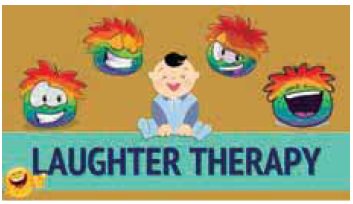Chapter: 11th English : UNIT 1 : Prose: The Portrait of a Lady
The Portrait of a Lady: Reading Activity
Reading
Reading is to the mind, what exercise is to the body. Have you ever counted the number of words you read in an hour? The average reading speed of an educated adult is approximately 15000 to 18000 words per hour. If you read four hours a day, you are likely to go through 60,000 words daily. As you go through this process, you would be able to acquire several skills such as
◆ intensive and extensive reading
◆ grasping meaning from the contexts
◆ expressing what you have understood, in appropriate words.
You would be able to learn various types of techniques like
◆ Skimming
◆ Scanning
◆ Decoding
◆ Encoding

According to Edward Fry, there are three reading speeds: Study reading speed, Average reading speed and Skimming speed. Study reading speed is generally used to read material which demands total comprehension and retention of its meaning, for example, while preparing for an examination. Average reading speed is used for everyday reading of newspapers, magazines and novels etc. Skimming is the fastest reading speed and is generally used for getting an overall idea of the material read. Scanning is another useful tool for speeding up reading. While scanning, you look for specific information without reading everything.
A few practical hints to help you do activities under reading comprehension passages:
1. Read the passage carefully and try to grasp its main theme.
2. Pay attention to the meanings of words (connotation), phrases and sentences.
3. Grasp the manner in which the writer has developed his ideas and thoughts.
4. Read all the questions in the sequence and conceptualize the answers.
5. Read the passage again focussing on the content and answer the questions appropriately. Find accurate solutions for vocabulary exercises too.
6. Go through your answers to check spelling, punctuation and grammar.
I. Now, read the following passage on “Laughter Therapy” and answer the questions that follow.

1. Laughing is an excellent way to reduce stress in our lives; it can help you to cope with and survive a stressful life. Laughter provides full-scale support for your muscles and unleashes a rush of stress busting endorphins. Since our body cannot distinguish between real and fake laughter, anything that makes you giggle will have a positive impact.
2. Laughter Therapy aims to get people laughing, in groups and individual sessions and can help reduce stress, make people and employees happier and more committed, as well as improve their interpersonal skills. This laughter comes from the body and not the mind.
3. Laughter Yoga (Hasya yoga) is a practice involving prolonged voluntary laughter. It aims to get people laughing in groups. It is practised in the early mornings in open-parks. It has been made popular as an exercise routine developed by Indian physician Madan Kataria, who writes about the practice in his 2002 book ‘Laugh for no reason’. Laughter Yoga is based on the belief that voluntary laughter provides the same physiological as well as psychological benefits as spontaneous laughter.
4. Laughter yoga session may start with gentle warm up techniques which include stretching, chanting, clapping, eye contact and body movements to help break down inhibitions and encourage a sense of playfulness. Moreover, laughter is the best medicine. Breathing exercises are used to prepare the lungs for laughter followed by a series of laughter exercises that combine a method of acting and visualization techniques. Twenty minutes of laughter is sufficient to augment physiological development.
5. A handful of small scale scientific studies have indicated that laughter yoga has some medically beneficial effects, including cardiovascular health and mood. This therapy has proved to be good for depressed patients. This laughter therapy also plays a crucial role in social bonding.
Answer the following.
a. How does laughter help one to cope with stress?
b. Which word in the text (para 2) means the same as ‘dedicated?
c. Why do you think voluntary laughter provides the same physiological as well as psychological benefits as spontaneous laughter?
d. ‘Laughter is the best medicine’. Explain.
e. Given below is a set of activities. Which of these are followed in the ‘Laughter Yoga’ technique?
◆ body movements
◆ clapping
◆ closed eyes
◆ breathing exercises
◆ chanting
◆ stretching of arms and legs
◆ bending backwards
◆ running/jogging
◆ eye contact
Body movements, clapping, chanting, eye contact are followed in the “Laughter Yoga technique”.
f ‘Laughter therapy also plays a crucial role in social bonding’. How?
Laughter Yoga is a practice involving people in
groups. When they gather for this yoga, they become cordial with one another.
Naturally it develops the social bonding. They understand each other. They
gather for one common aim. They are happy and can improve their interpersonal
skills.
Related Topics